The Enigmatic Fort Fryderyka Wilhelma: A Forgotten Legacy
There is a place in the east of the Oder where Rome Meets Poland.
In the heart of Kędzierzyn-Koźle, a place that whispers its own history, lies an unexpected marvel: the Montalemberts Bastei, affectionately known as Friedrich-Wilhelm-Fort 1. A place, where Rome meets Poland... Picture this: brick walls reaching skyward, bathed in a crimson glow under the sun. The air hums with secrets, and the rusted iron struts seem to guard tales of valor and intrigue.
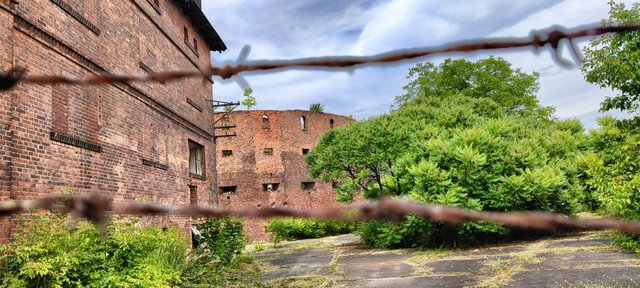 Remains of Barbered Wire
Remains of Barbered Wire
A Fortress Reclaimed by Nature
The fort stands forgotten, its purpose obscured by time. But let’s rewind the clock—more than two centuries—to when it was conceived. Imagine a French engineer, Marc Rene de Montalembert, fueled by an obsession with defensive structures. His mind danced with visions of impregnable fortresses, bastions that would defy invaders and leave them licking their wounds.
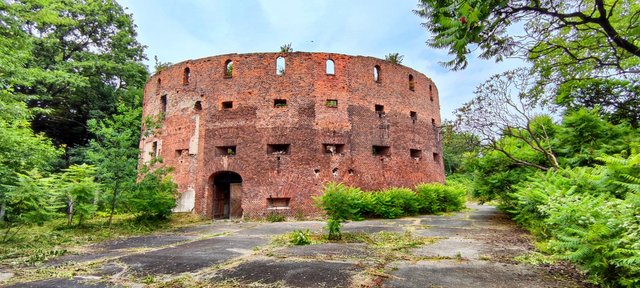 The Fortress looks like the Amphitheater in Rome
The Fortress looks like the Amphitheater in Rome
In the middle of a place called Kędzierzyn-Koźle there is suddenly this huge aphite theater. Another Poland, now Rome! The brick walls reach up to the sky and seem to glow red in the sunlight. Iron struts have rusted, trees and bushes are in the process of reclaiming the walls. The gate at the entrance is only carelessly locked and the fence next to it has long since been torn down. A fortress abandoned by its builders. But a place that holds a lot of secrets.
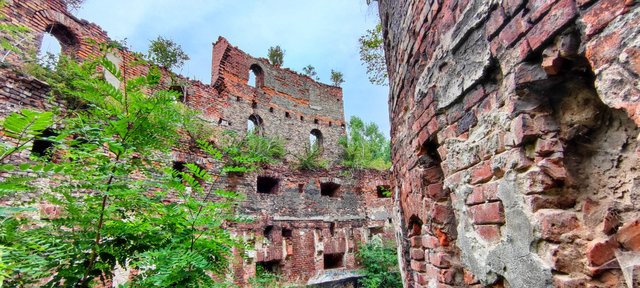 Ruins reclaimed by nature
Ruins reclaimed by nature
Forgotten in a forest
We are in the Montalemberts Bastei, also called Friedrich-Wilhelm-Fort 1 in German. The building stands unnoticed and forgotten in a forest on the Oder, on the right, the Polish side. It looks old, but is actually much older. It was built more than 200 years ago on the ramps of a fortress of which there is no trace today. It was intended to prevent the enemy from attacking the city walls by counterfire. Also within firing range of the artillery were several canals, the Klodnitz River and the tiny village of Pogorzelletz. They were all supposed to fire the fort's cannons when an enemy attacked.
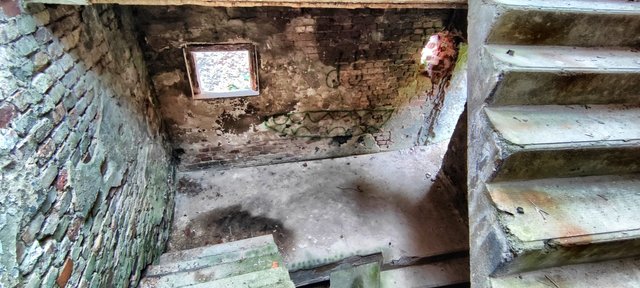 The stairways to the roof
The stairways to the roof
The modern castle was thought up by the French engineer Marc Rene de Montalembert, who, as an officer in the French army, had developed a particular interest in defensive structures. de Montalemnbert loved fortresses and he wrote countless books about how they could be built even safer, more stable and, above all, in such a way that any attacker would get a bloody nose. de Montalembert designed veritable labyrinths of masonry from which fire could be fired in all directions.
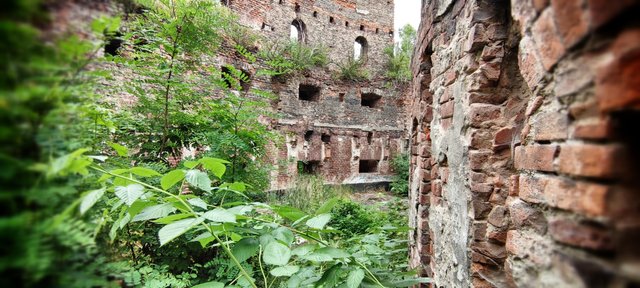 The backyard
The backyard
Mysterious circular tunnel
The tower at Kędzierzyn-Koźle is an example of the modern fortress architecture he invented. It was built in 1805 exactly according to the Frenchman's instructions; he also came up with the idea of building a basement under the amphitheater and having the cellars run around the entire building as a mysterious circular tunnel.
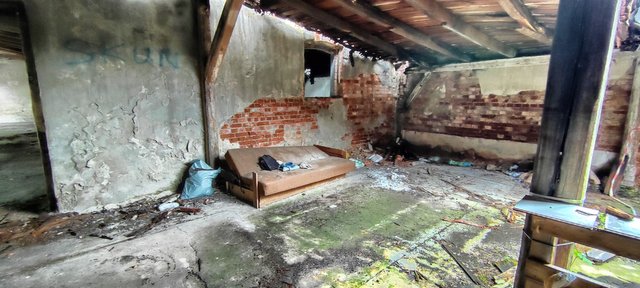 A couch in the fortress
A couch in the fortress
This meant that ammunition supplies could have been easily brought to wherever they were needed, and cannons would never have been left idle because they could simply be dragged to wherever enemies appeared.
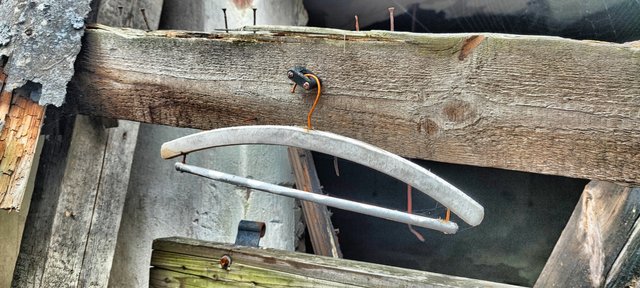 A hanger is left behind
A hanger is left behind
However, Fort Fryderyka Wilhelma, as the Poles call it, was never finished. On behalf of the King of Prussia, Friedrich Wilhelm II, construction began on the building in 1790 as part of a whole series of border fortresses in Lower Silesia. The Silesian Wars (1740–1763) between Habsburg-Austria and Hohenzollern-Prussia effectively consolidated Prussian authority in Silesia and the Glatzer Land. But Empress Maria Theresa and co-regent Joseph II of Habsburg did not give up and the Prussian kings did not yet feel safe in the areas that had been withdrawn from the empire.
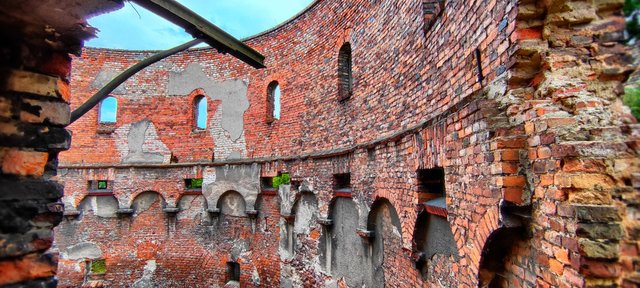 The red bricks are beautiful
The red bricks are beautiful
Part of the defense system
The construction of Fortress Friedrich, one of five fortresses in the Glatzer Land, which is part of the defense system associated with the fortress in Srebrna Góra and the fortress in Kłodzko, was led by Major Bonaventura von Rauch. By order of King Frederick William II, in a letter dated May 18, 1790, he requested from the Silesian minister, Count Karl Georg von Hoym, to provide 1,000 workers (including 150–200 carpenters) and 7–8,000 logs and boards to build a system of fortresses.
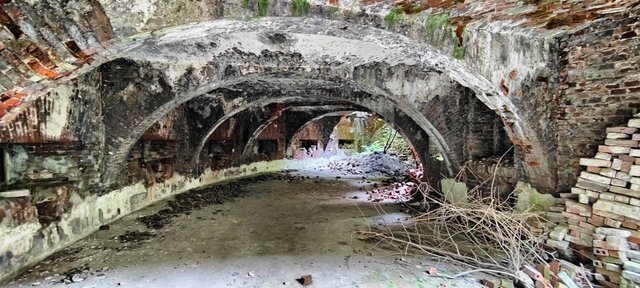 Under the surface the tunnels are huge
Under the surface the tunnels are huge
He was supported by his son, a recent graduate of the Military Engineering Academy in Potsdam, the later general and Prussian Minister of War Gustav von Rauch (1774–1841), and from Bystrzyca Kłodzka he was directly supported by captain-engineer Ludwig Müller [1 ] looked after. . The task of the fortress was not to defend the section, but to sound the alarm in the event of an invasion by fire signaling (lighting fires).
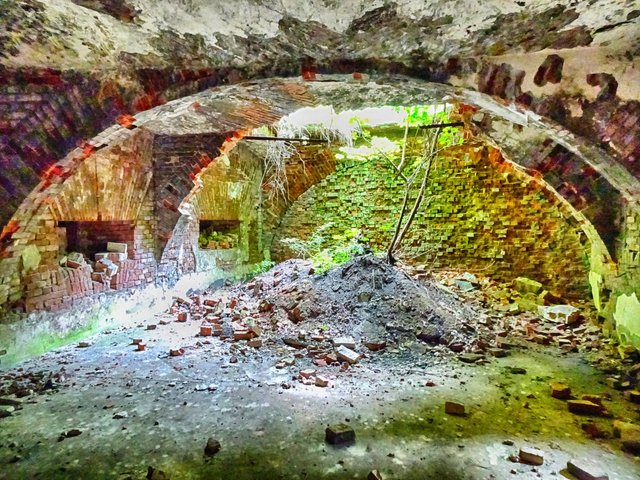 On some points the tunnels are broken
On some points the tunnels are broken
Never used for a war
In order to prepare for a possible attack, it was decided to build a series of fortresses, support fortresses and blockhouses. Also known as Montalembert Bastion, the fortress consisting of the four-story tower with the basement and the round courtyard was added one floor just 30 years after its completion reduced in size.
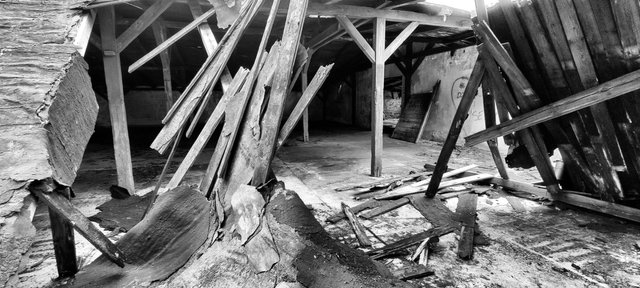 Some wooden parts are broken too
Some wooden parts are broken too
After such types of fortresses were no longer suitable for war, the entire area became the headquarters of a malt factory - a rusty plaque on one wall still suggests the words "mill". But this settlement wasn't lucky either - at the end of the Second World War everything burned down at.
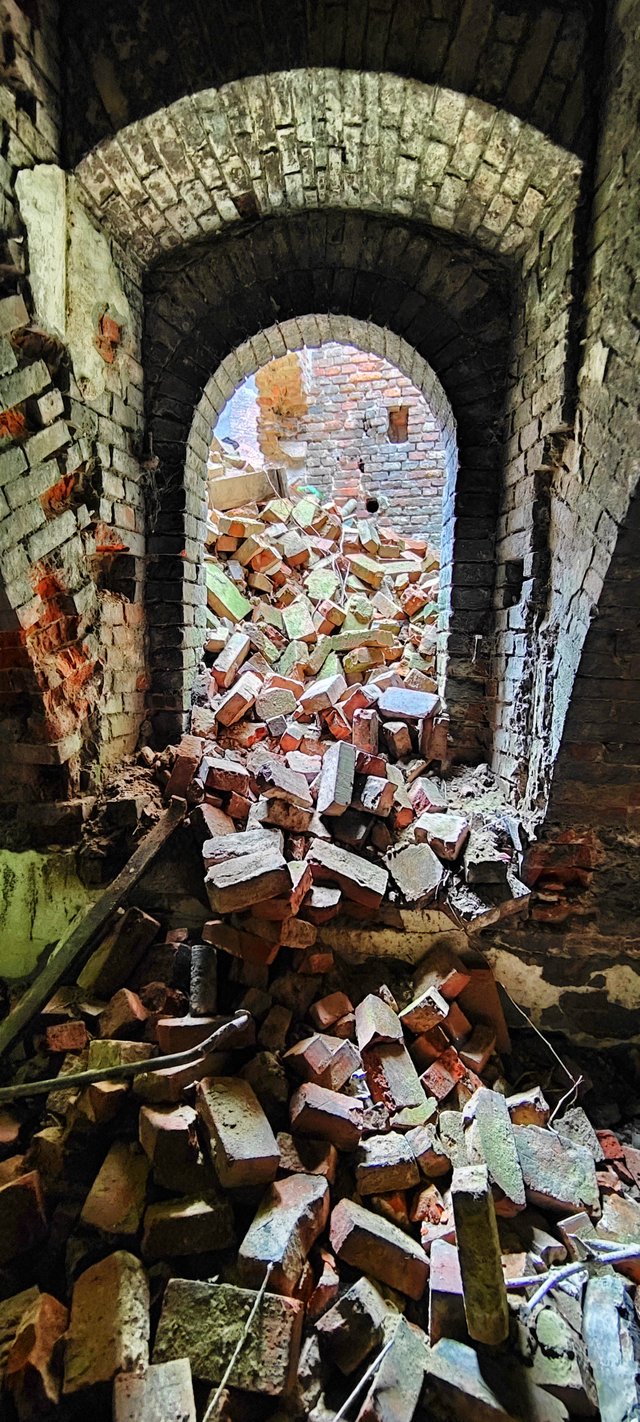 "Bricks" like Dave Hause sings
"Bricks" like Dave Hause sings
The name Fort Friedrich was soon forgotten. The Germans called the fortress Steinburg or Fortress Nesselgrund (from the German name Pokrzywna). After 1945 it was called “Fort Blokhauz” (according to the inscription “BLOCKHAUS” on a stone tablet previously placed above the entrance) or “Fort na Kamienna Góra”. The original name was only rediscovered in 2006 by a local researcher.
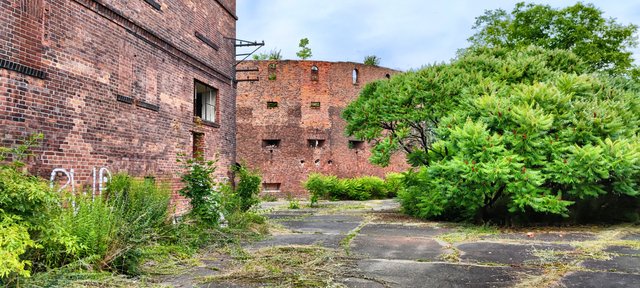 Behind the open door
Behind the open door
Mysterious memorial plaque
There is a funny story associated with Fort Frederick. At his peak there is a memorial plaque, heavily covered in moss, which survives to this day, with the inscription “Ponzel's bold jump 1887” and a drawing of a hand showing the direction, commemorating the jump of a local eccentric, August Ponzel. who was commonly involved in the production of wooden squids.
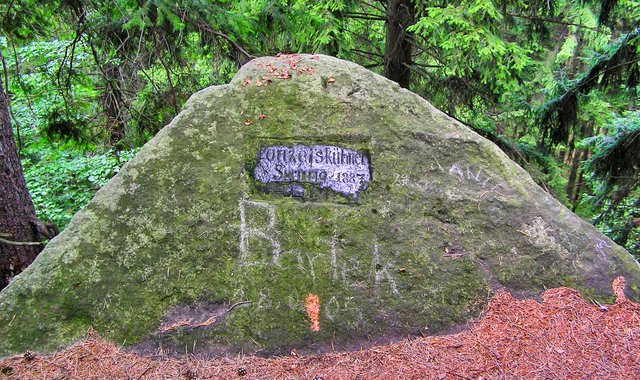 The plate for “Ponzel's bold jump 1887”
The plate for “Ponzel's bold jump 1887”
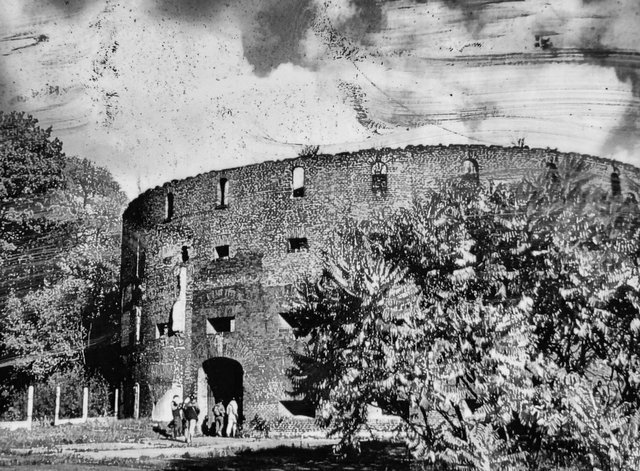 An very old picture
An very old picture
As an Old Believer and veteran of the Franco-Prussian War of 1870–1871, without thinking clearly, he made a bet with his friend Karol that, surrounded by the enemy, he would jump into an abyss several meters high. Ponzel survived because he fell on the branches of a tall spruce tree and slid down. Then, scratched and bruised, wearing a tattered Sunday suit, he went to the inn to eat his winnings: a bottle of Urian vodka and a bundle of sausages. As he told guests wishing him a happy 80th birthday in the early 1920s, he spent the next week in bed because "his bottom hurt terribly..."
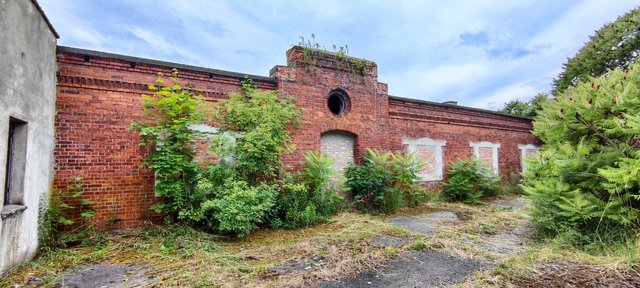 The barracks
The barracks
In summary, the Fort Fryderyka Wilhelma stands here: 50°22'30"N 16°29'52"E an as a testament to historical military architecture too, but its neglected state and architectural choices hint at potential failures in its defensive capabilities. Perhaps the secrets it holds extend beyond its physical walls, revealing the complexities of its past.
Thank you for reading and if you like my work please follow me on Hive, Travelfeed or Steem or visit my homepage koenau.de
A few more picture fro you:
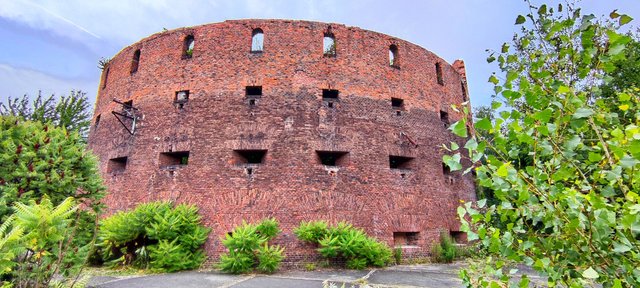 The polish government has plans to save the building, but they need money from the EU
The polish government has plans to save the building, but they need money from the EU
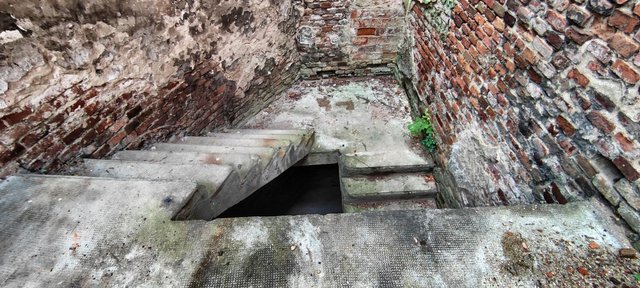
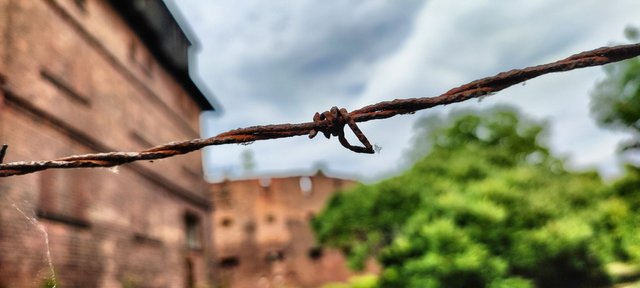
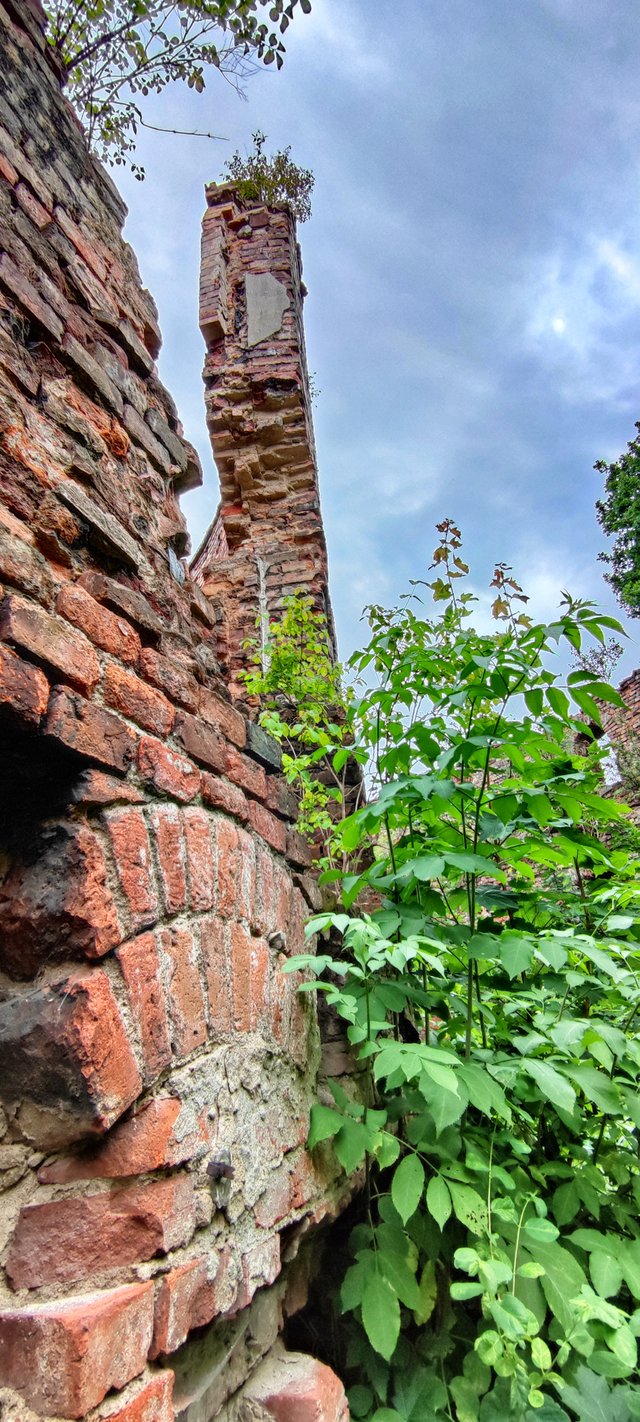
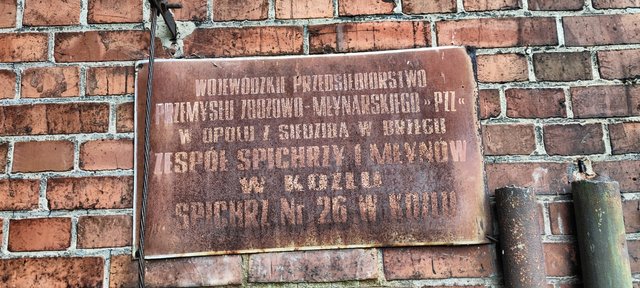
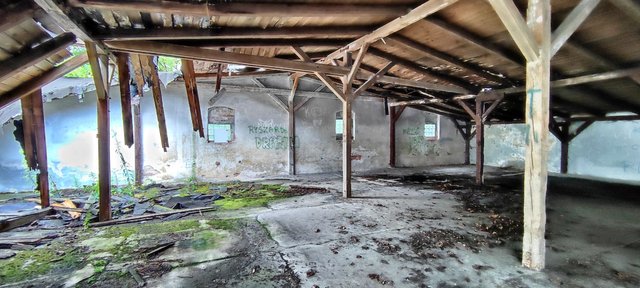
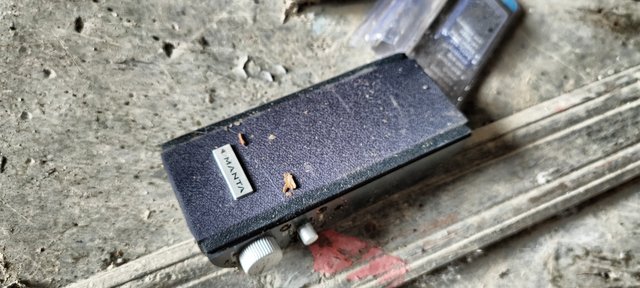
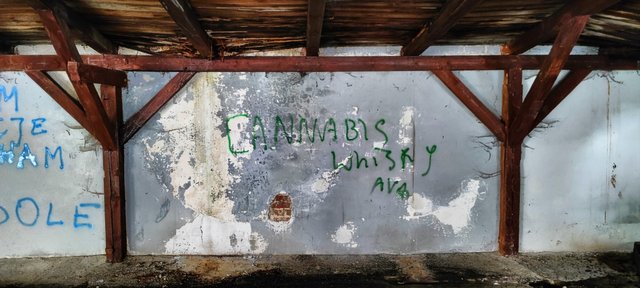
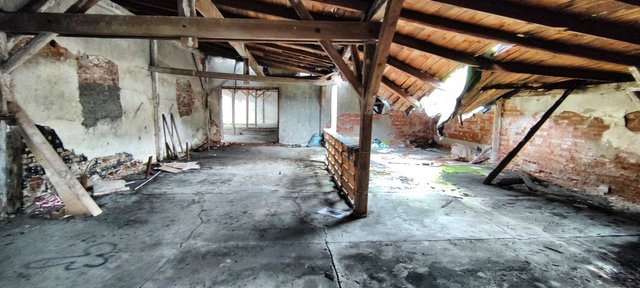
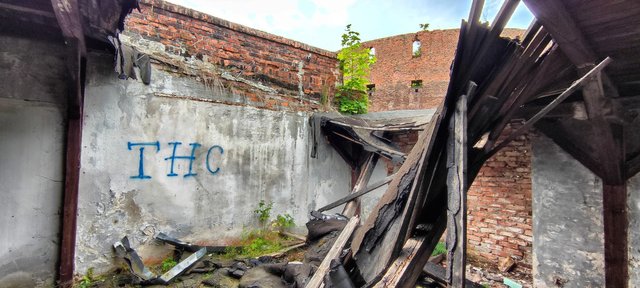
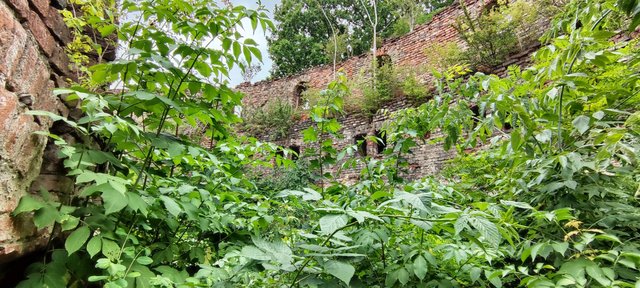
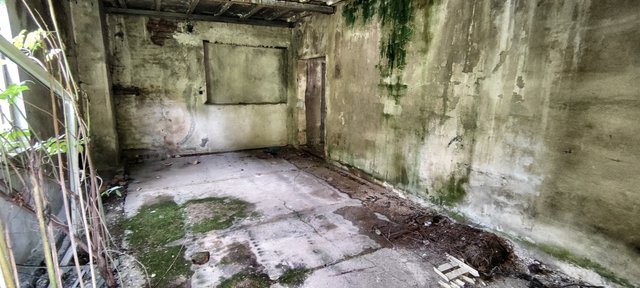
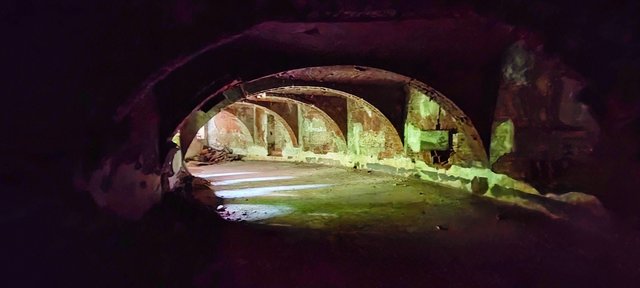
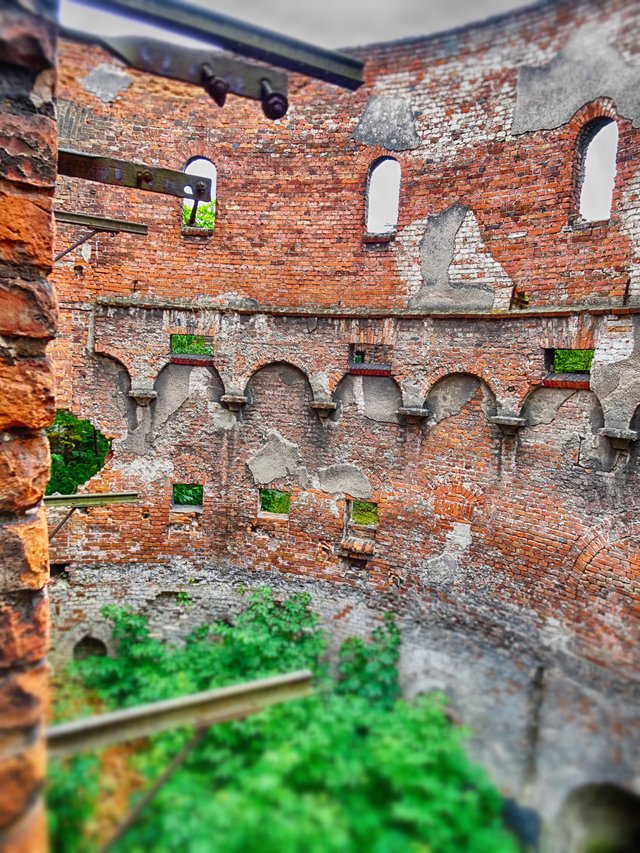
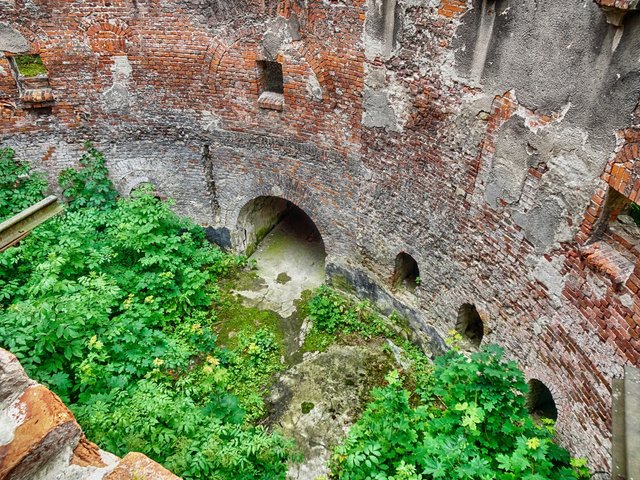
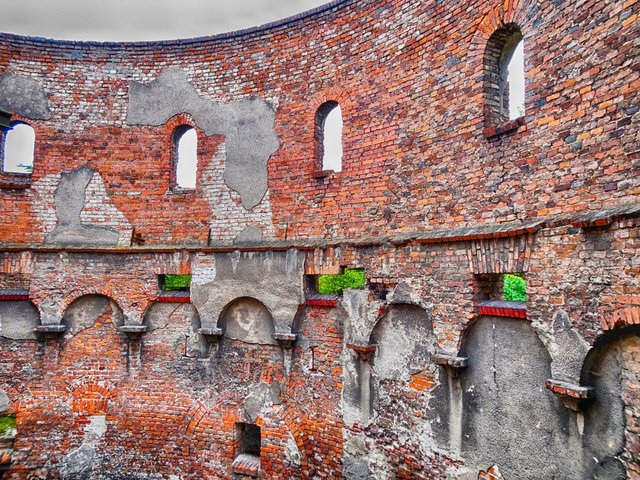
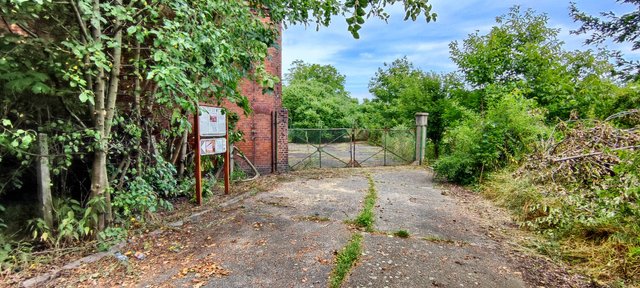
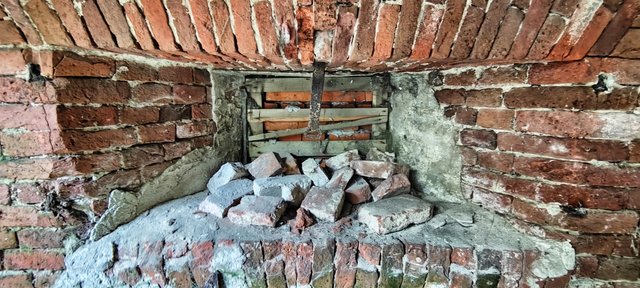
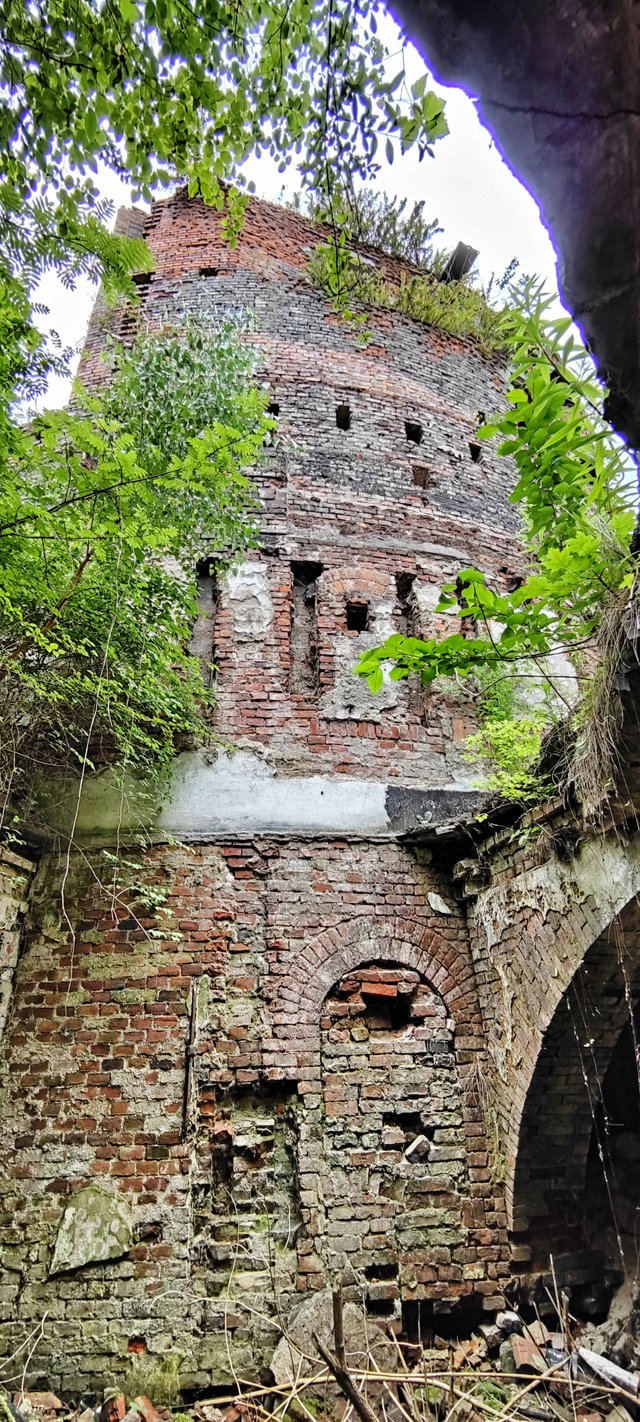
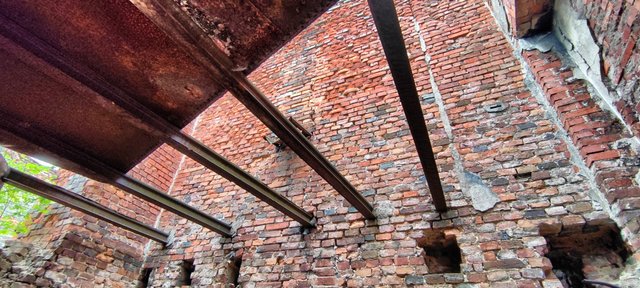
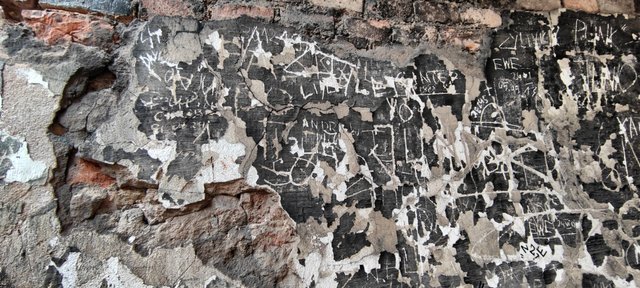
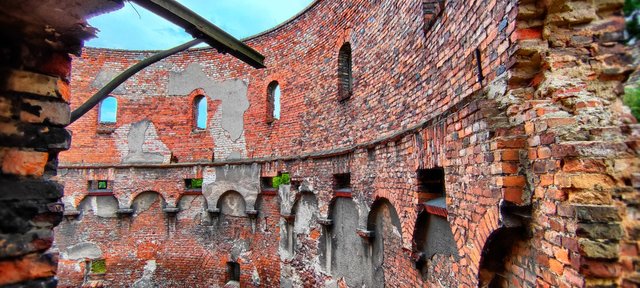
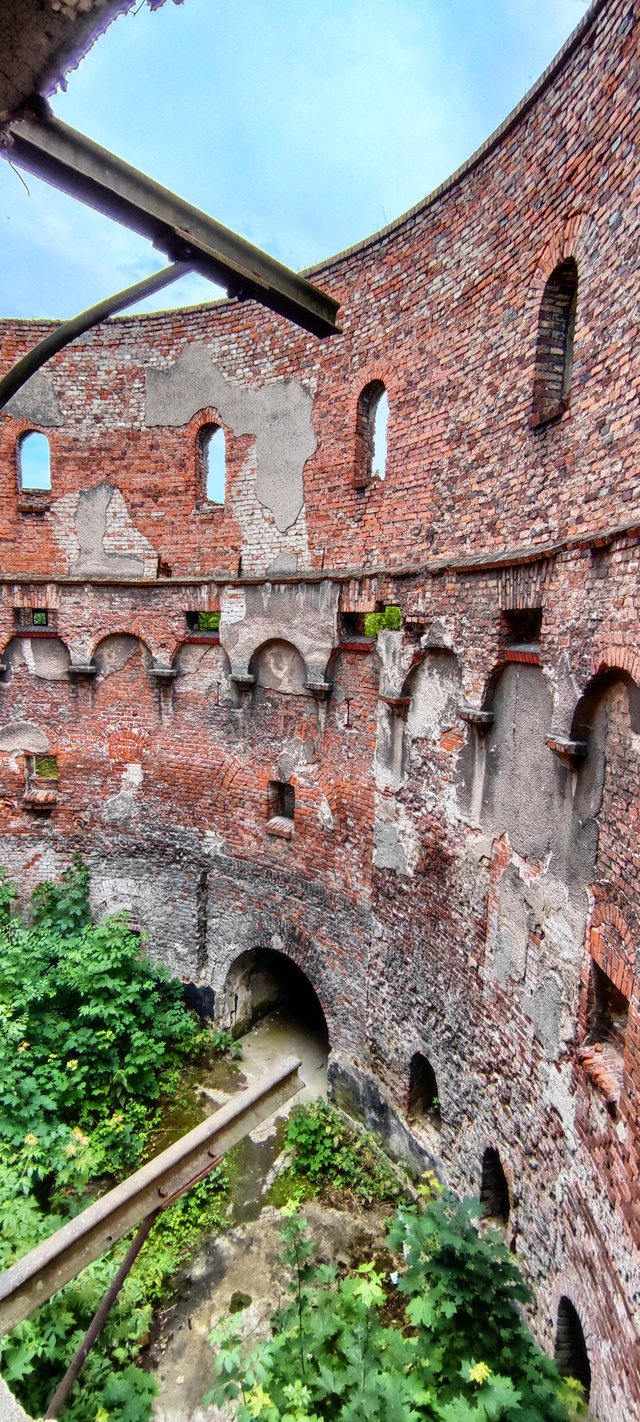
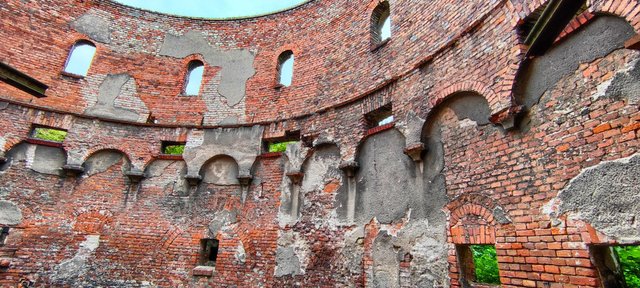
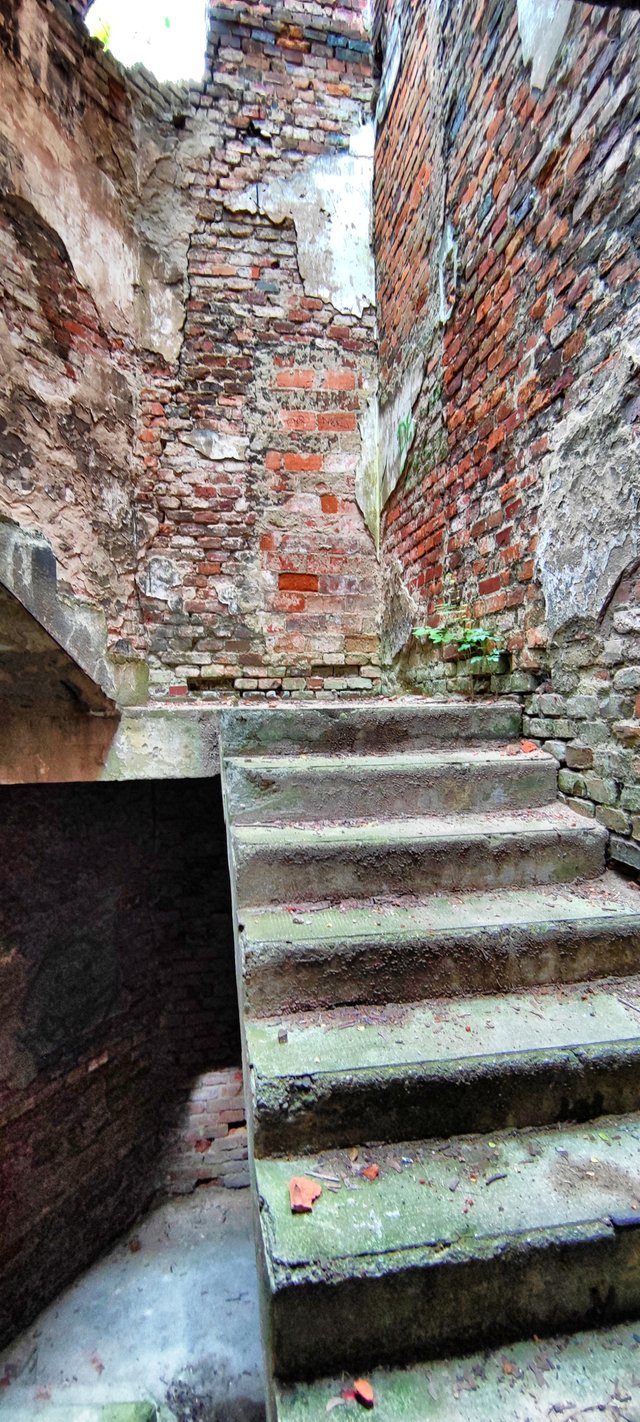
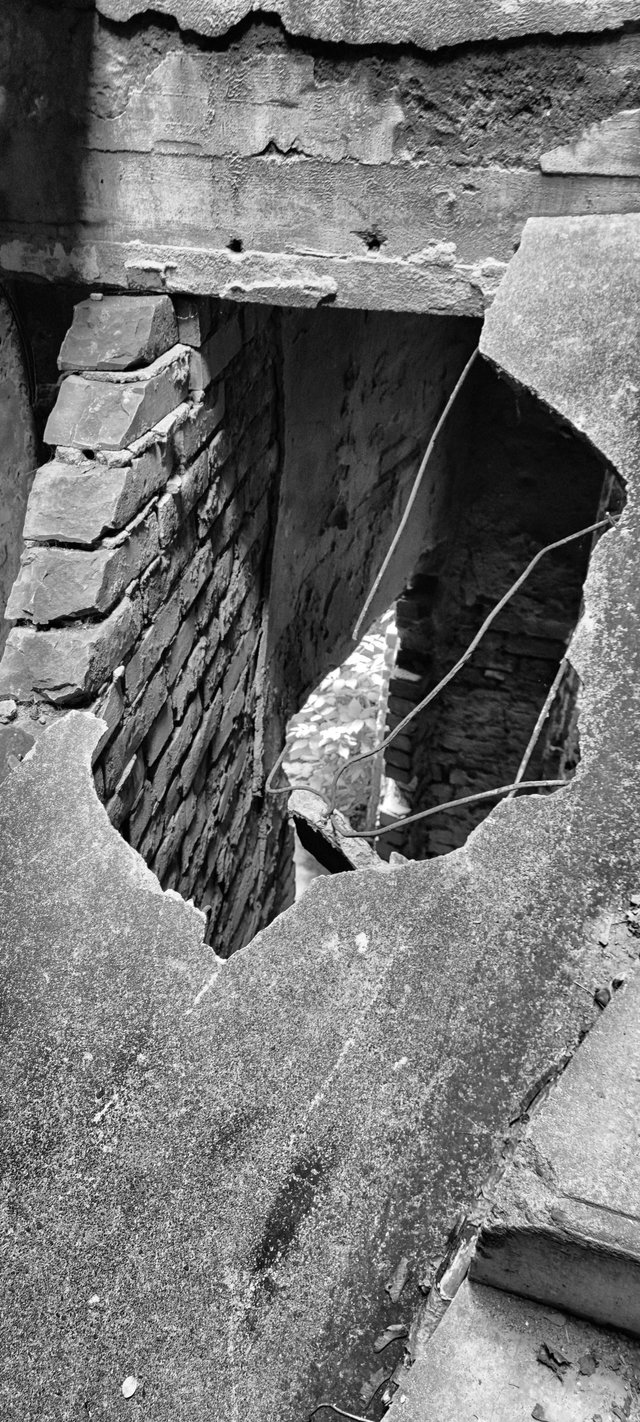
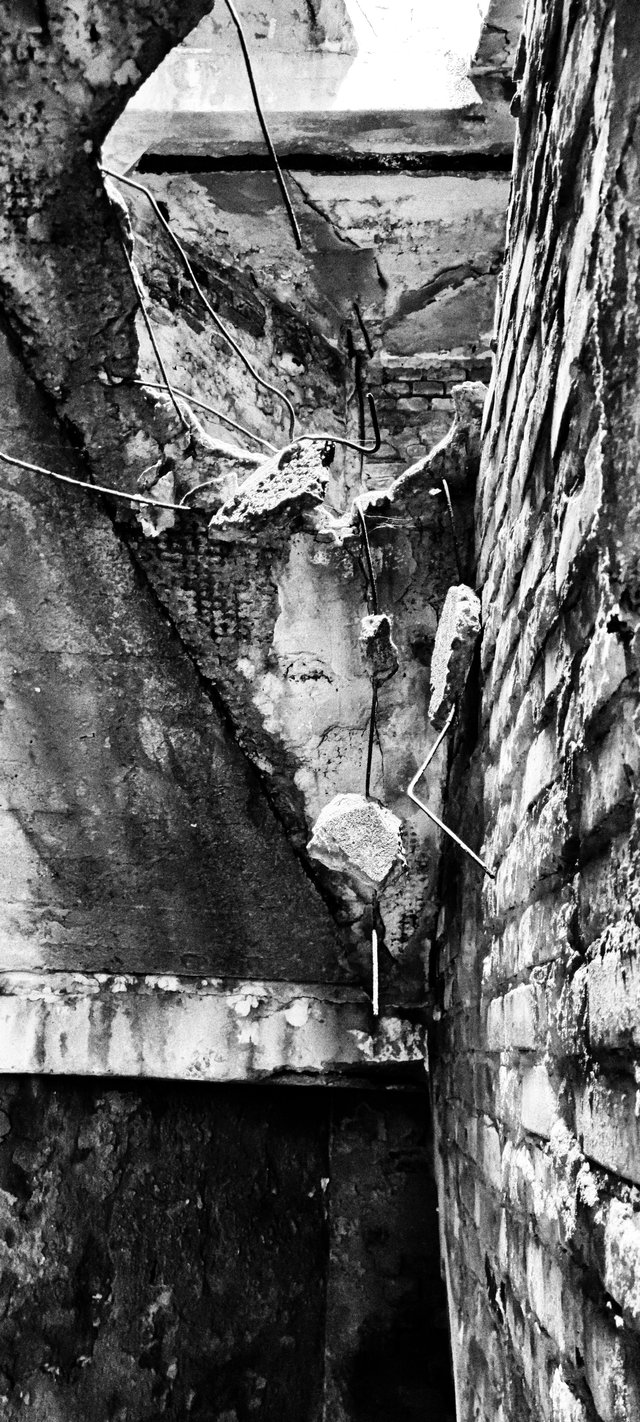
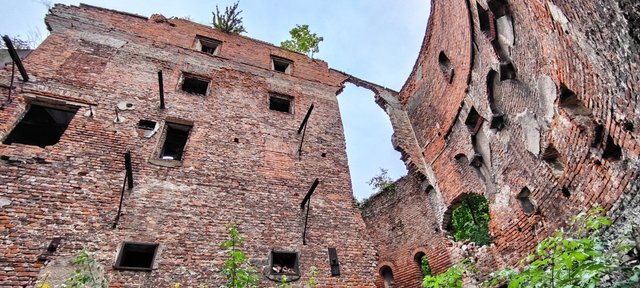
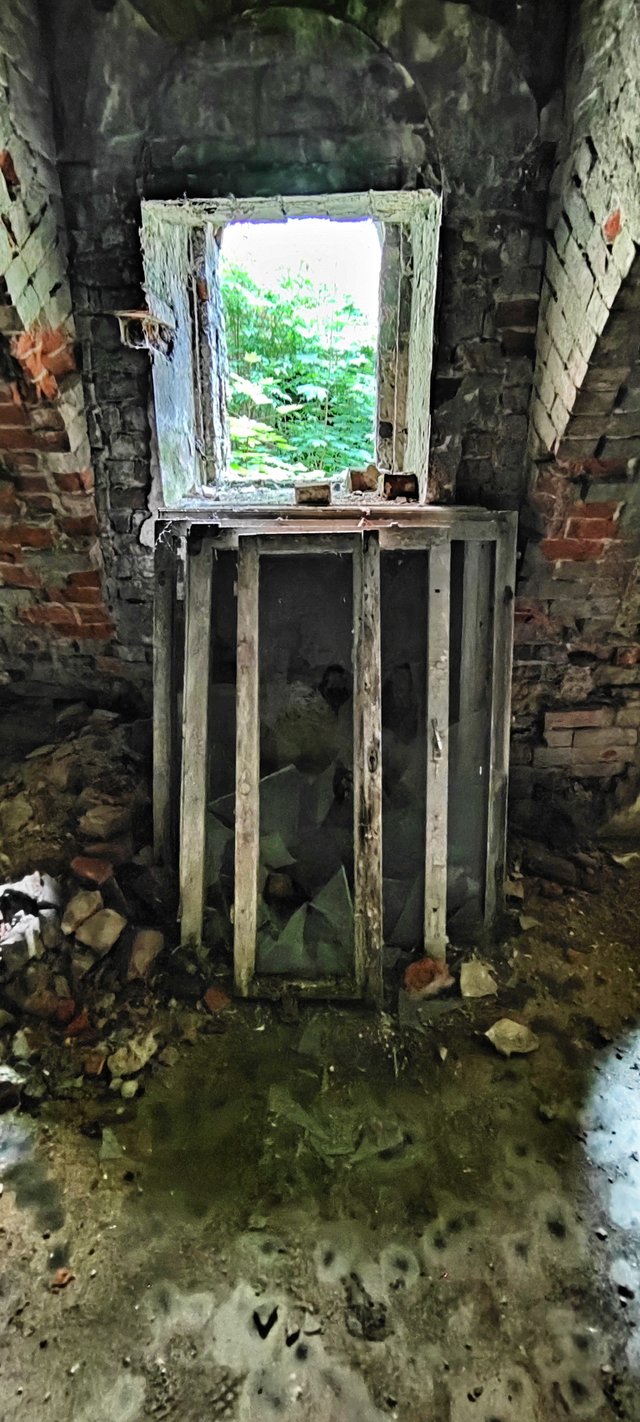
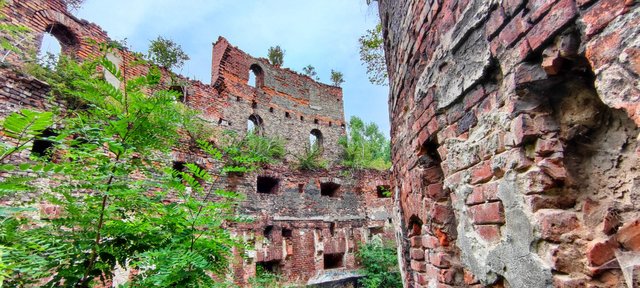
Congratulations @koenau! You received the biggest smile and some love from TravelFeed! Keep up the amazing blog. 😍 Your post was also chosen as top pick of the day and is now featured on the TravelFeed front page.
Thanks for using TravelFeed!
@for91days (TravelFeed team)
PS: Have you joined our Discord yet? This is where over 1000 members of the TravelFeed come together to chat. Join us!